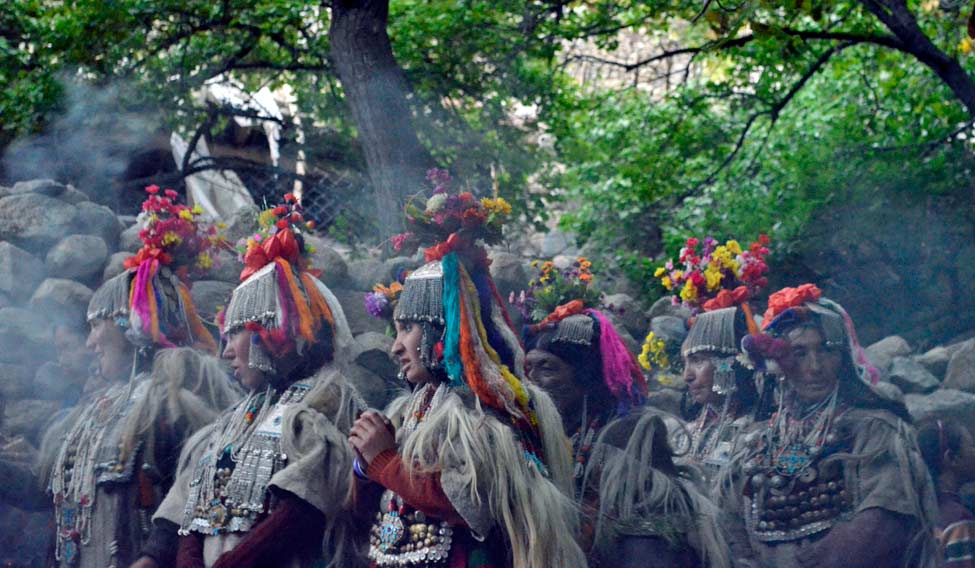Climate change has made summer and winter warmer and seen the advent of pests, leading to a significant drop in their traditional crops, forcing the Brokpa to change their lifestyle.
The little-known Brokpa tribals of Ladakh, who claim to have been vegans for some 2,200 years of their existence, are slowly opting for an alternative diet including dairy products, eggs, and meat — thanks to climate change. Climate change has made summer and winter warmer and seen the advent of pests, leading to a significant drop in their traditional crops, forcing the Brokpa to change their lifestyle. “We have had to shift to an alternative lifestyle, not exactly what the Brokpa once used to be. People also consume meat. Some old folks still avoid this, but eggs, meat, and milk are on the menu,” Tsering Namjial, the Nambardar or head of Dha village, told this visiting IANS correspondent. Practising old-style Buddhism with the Lha deity at the center of their faith, some Borkpas still practice veganism and rely on what grows from the earth out of fear of getting polluted. It takes about an hour to climb from a road that leads to Baltistan, some 160 km along the Indus from Leh towards Batalik, to reach Dha village — the heartland of the Brokpa community. The villages are connected with rough roads, though the Brokpa prefer trekking.
The climb begins from a village called Beema, where abnormally melting glaciers have swallowed several houses.The Brokpas, who speak Broskat, have distinctive looks — tall, fair, with flawless skin, green eyes, a strong jawline semi-Mongolian features.Showing this correspondent around his village, which a few decades back was barred to outsiders, Namjial pointed towards apricot orchards — known in the region for their sweetest Khumanis, herbs and other crops.”The variety in agriculture has increased but production has dropped drastically, mostly due to the pests and depleting soil health. This is one of the major reasons, along with migration, that consumption of meat and dairy products is becoming common,” he said.
The tribe traditionally grew barley, potatoes, apples, and apricots, while wheat was introduced later. Due to the rise in temperature, cherries, plums, grapes, tomatoes, cabbage, cauliflower, gourd, capsicum, beans, and peas are also cultivated despite the high altitude.However, the pests, now surviving due to the milder winter — including fruit flies, codling moth, yellow rust, green and black headed worms — are the emerging threats.According to records with NGO Ladakh Environment and Health Organisation (LEHO), pests were most probably imported about 18 years back and Dha and Hanu were the first villages in the region to report the codling moth.
Other Brokpa villages around Dha are Hanu, Beema, Garkon, and Dhardik, with about 1,700 residents. All these villages were evacuated during the 1999 Kargil war, though the men stayed back to look after the crops and help the army.With more options now on the platter, though not all villagers practice the same lifestyle anymore, they all shared the same opinion about global warming.”Days are becoming hot, rivers are becoming fierce and winters are not cold like before. We remember the time when, during winter, the skin would stick to the iron pillars if we touched them with bare hands. It does not happen anymore,” said Nima Tsering of Beema.
He recalled the flash floods of 2010, 2013 and specifically mentioned August 3, 2015, when an entire part of Beema was washed away. To date, several houses, including a two-storeyed government guest house, are under water.According to records, between 1973 and 2008, an appreciable rise of one degree Celsius in the minimum temperature during winter and 0.5 degrees in peak summer had been observed. There was hardly any study done after that.Further, a survey conducted in the region claims that despite the harsh 2008 weather, 95 per cent people in Kargil felt the winter and 89 percent felt the summer to be warmer.




